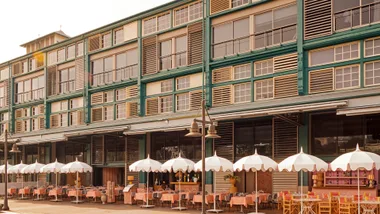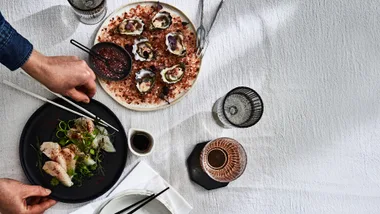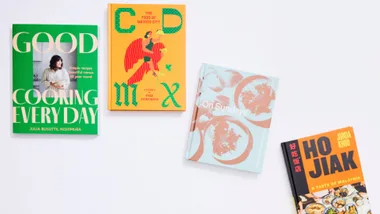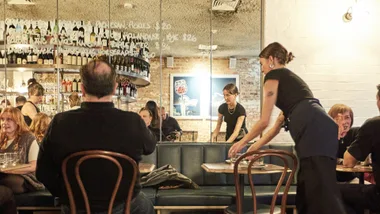Serious seafood
It’s been a big year for seafood, with farmed Tasmanian salmon floated in parliament, an algal bloom affecting the industry off South Australia, and the countdown on to mandatory country-of-origin labelling on menus from July 2026. In the wake of this turbulence, sustainability, traceability and ethical sourcing has become a big consideration for restaurants, fish and chip shops and home cooks.
“Nowadays, people know the impacts that things like overfishing and climate change have, so they want to know more about what they’re eating,” says Peta Morton from the Australian Marine Conservation Society and GoodFish, whose online Sustainable Seafood Guide includes a traffic light-style classification. “We’re seeing chefs around the country pledge to avoid red-listed species, not just because their customers expect it, but because they want to serve food that aligns with their values.”
Cordelia, in Melbourne, champions lesser-seen species with guidance from GoodFish, as does Sydney’s Felons Seafood, where luderick swim under Manly Wharf – and are fried on the menu. Chef Evan Hayter at Margaret River’s de’sendent sources from local line-only fishers Southwest Wildecatch, whose haul might feature on the menu alongside Manjimup marron and Exmouth prawns. Beyond the wave-making approach of Saint Peter, leaders of the industry like Adelaide’s Fair Seafood (Australia’s first seafood supplier to provide 100 per cent fisher-to-consumer traceability) and the Mures family of “hook-to-plate” venues on Hobart’s waterfront are decades into their long-running missions to make sustainable seafood choices easy.
Beef tallow’s back
Just when we thought chips couldn’t get better, beef tallow is making a comeback thanks to the unmatched flavour imparted by the old-school by-product. In Brisbane, The 203 (showcase restaurant of integrated beef producer Stanbroke) serves tallow-fried chips or eggs as accompaniments to its premium steaks, while Sydney’s underground ode to the T-bone, Bistecca, sets the mood with a flickering tallow candle that invites diners to drag focaccia through its drippings. For at-home snackers, newly launched Byron Bay-made Sunseeker Snacks cooks its crisps in organic, grass-fed beef tallow for “a deep, savoury richness that other oils simply can’t match”. We predict more to come.
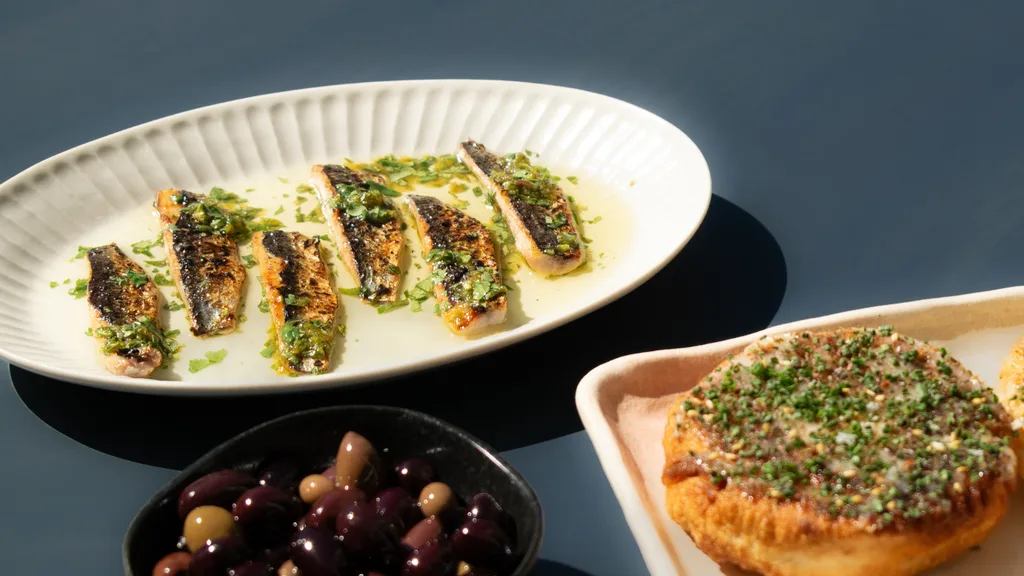
Wallet-friendly wonders
When spending money is in short supply, the hospitality industry suffers, so smart restaurateurs are adapting. Sydney’s Aria just added its Snack Bar menu of elevated morsels to the permanent roster, and the $69 Flow lunch at Wildflower in Perth is a budget-friendly way to taste its take on Noongar seasonality. Andrew McConnell’s Cutler moved from dégustation-only to à la carte, responding, he explains, to “the shift in what luxury means to diners now, and how guests prefer to dine in 2025 – where choice, flexibility, atmosphere, accessibility and integrity are the cornerstones of the offering”. With established eateries like Adelaide’s Fino Vino, Such and Such in the capital, and Entrecôte in Prahran sharing their take on happy hour, we look forward to seeing more clever ways that venues explore great-value offers that complement their core.
Caffeine creations
With flavoured foams, sodas, syrups and more showing up on menus, Australia’s internationally respected café culture has either discovered its sense of fun or jumped the shark. What started with iced strawberry matchas now sees almost any trending treat turned into a drink. Take Sydney café Tessuto, where you can dip a savoiardi in your tiramisù iced latte. Sun Devil in Tweed Heads has done away with the espresso machine entirely, instead offering cold brew (on coconut water, perhaps), matcha lattes, and signature drinks like the Devil’s Advocate: sea salt and vanilla-infused cold brew topped with a layer of pistachio cold foam. Asian coffee culture is another key influence, as seen in Korean-style takes on einspänner lattes (like at Chubby Cubby in Sydney’s Haymarket), or at Sonder in Brisbane, lattes made with black sesame hojicha – matcha’s roasted cousin, which is gaining popularity, and might even have its eye on the throne. For purists, new Melbourne café Matcha Kōbō mills matcha daily for traditional expressions (though specialty drinks like a citrus matcha Mont Blanc or honeycomb hojicha latte are also on the menu).
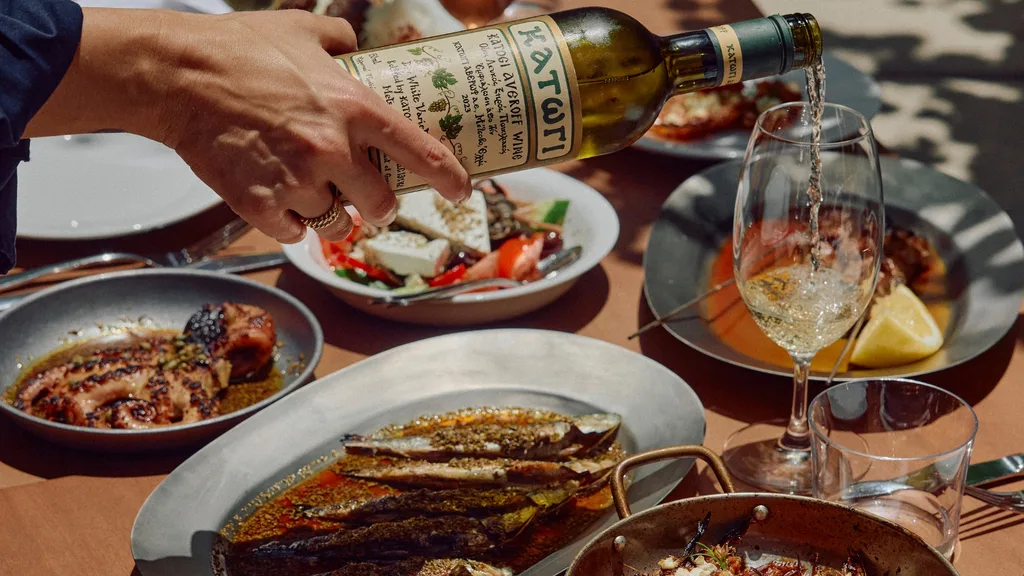
The Greek comeback
Hellenic cuisine is having another moment in the sun, from abundant, shared spreads in taverna-inspired settings to upmarket venues redefining what Greek food looks like in Australia. Newcomers such as Melbourne’s Aegli go beyond the spanakopita and saganaki, while Olympic Meats (in Sydney’s inner west) sends out sheftalia, sourdough pitas and cinnamon-sprinkled bougatsa at a lightning pace. Glitzy favourites like Brisbane’s Hellenika, Yiamas in Perth and Northern Rivers’ Taverna continue to attract crowds seeking a momentary Aegean escape, and Olympus Dining was Sydney’s most coveted booking when it opened in late 2024. Oscar Solomon, group development chef at The Apollo Group (Sydney’s Olympus Dining and The Apollo and Brisbane’s Greca), says: “Greek food is about generosity and accessibility, and the Greek style of eating – sharing – is a truly beautiful notion. In a cost-of-living crisis and a pretty tense geopolitical environment, there is undoubtedly a correlation there.” We foresee menus dedicated to Greek regions being the next development in this ongoing trend. And can we request more Aussie-made ouzo, please?
See also:
- Homer Rogue Taverna, NSW
- Avalon, WA
- Kafeneion, Vic
More amaro
A natural progression from recent drinks trends like vermouth, Martinis and ruby Negronis, amaro is the current toast of the bar scene. With medicinal origins in Italy (but now produced globally), the bittersweet, herbal liqueur works as an aperitif mixed simply with soda, a post-meal sip over ice or spun into cocktails that call for complexity. At The Parlour Amaro Bar in Beechworth, amari are built on aromatics like kombu, bergamot and coffee, while in Sydney, Raffaele Lombardi’s personal passion for the category has him stocking close to 50 amari at Conte Sydney, the new CBD expansion of Surry Hills’s Bar Conte.
See also:
- Herbs Taverne, NSW
- La Madonna Nera, WA
- Before + After, Qld
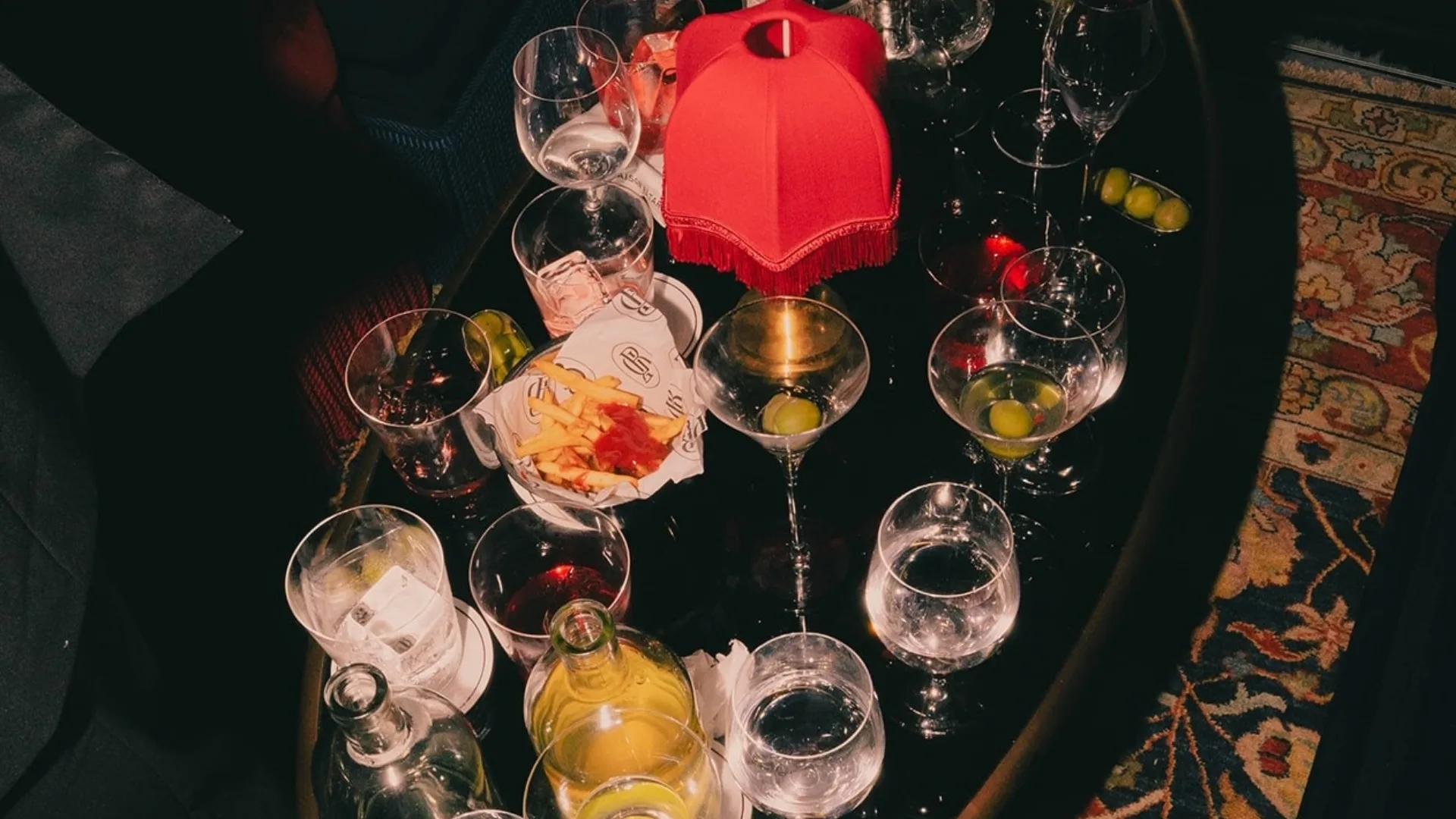
Dinner to dance floor
Echoing a boom in fine-diners that encourage post-dinner dancing in New York (where they’re termed “clubstaurants”), this movement is all about one-stop destinations for dialled-up nights out. A disco ball makes an appearance over the bar at Brisbane’s underground Hong Kong-inspired restaurant, Central, where DJs play past midnight on Saturdays, bridging the gap between share plates and cutting shapes.
You can also catch the groove in Sydney’s pumping Wunderlich Lane precinct, where the Southeast-Asian eatery Island Radio hosts resident DJs in the booth Thursday to Saturday, and even the cocktails are adorned with disco details. Meanwhile, at Melbourne’s Maison Bâtard, descend after dinner to Le Club in the basement for live music, DJs or burlesque.
Local fast food
At the less glamorous end of the trend spectrum, Australian fast-food joints are giving the Golden Arches and the Colonel himself a run for their money. Fishbowl, founded in Bondi, now has around 50 Australian stores and made a splash when it opened in New York in 2024, and Betty’s Burgers has made it from the laid-back Noosa strip to its first drive-through coming later this year. Preference in charcoal chicken brands (El Jannah, Chargrill Charlie’s, Frango etc) is fiercely debated nationwide, and Belles Hot Chicken, care of Morgan McGlone, is a late-night temptation in Melbourne, Adelaide and Sydney.
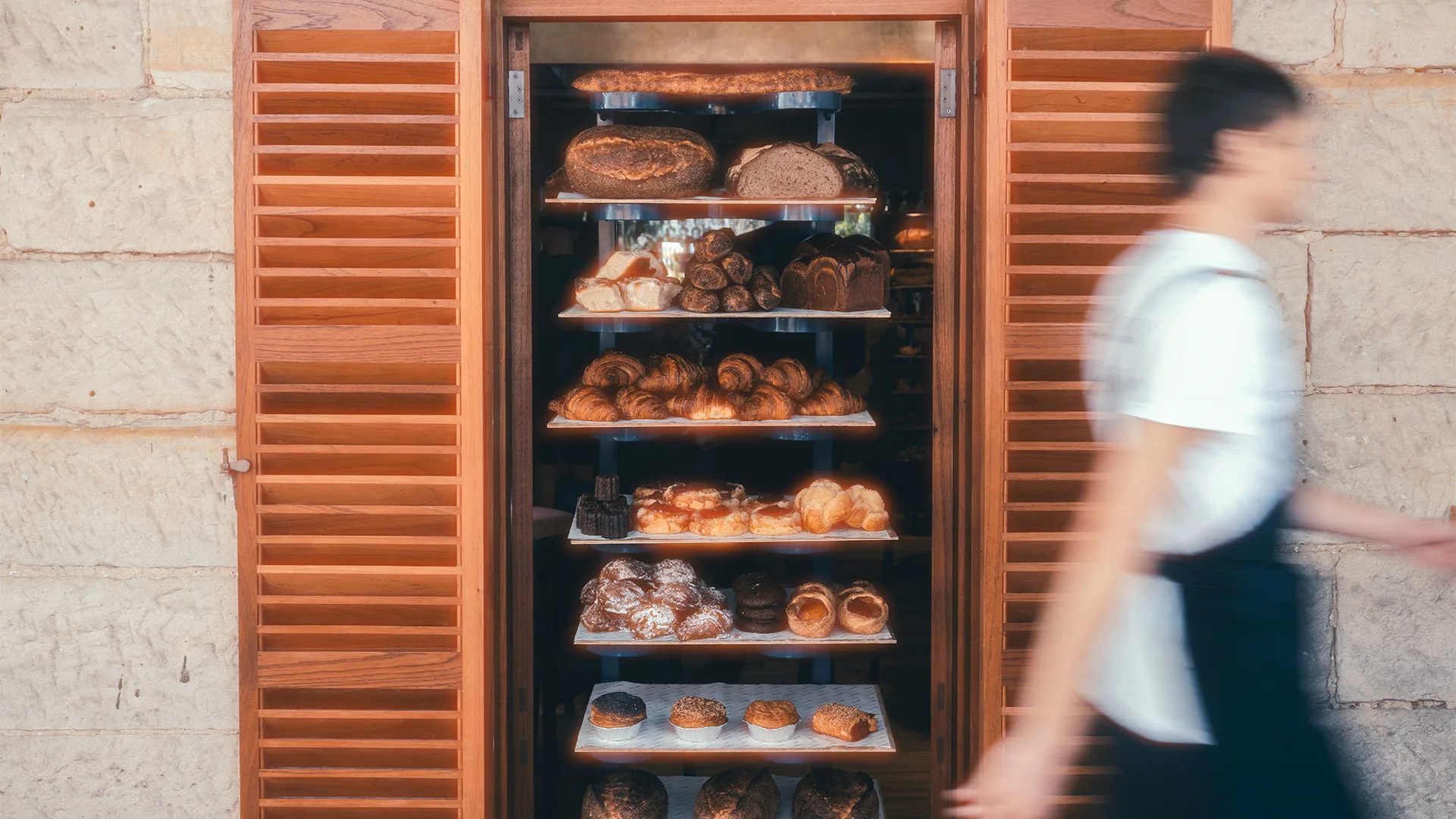
The bakery uprising
They may have been at the heart of communities for centuries, but 2025 has seen an evolution in bakeries. Brisbane’s Covid-era breakout star Agnes Bakery just relaunched down the road as Idle with room for dining in, an all-day menu, and a retail offering including house-made take-home picks. In Sydney, A.P Bread & Wine in a heritage sandstone cottage in Darlinghurst is A.P’s first foray into an after-dark format, switching from bakery/café to a neighbourhood restaurant and bar, turning leftover bread into pasta and pouring natural wines. In the era of the run club, A.P Bakery also rewards participants of a five-kilometre loop from its street-level Surry Hills outlet with a free, cream-filled choux for their efforts on select weekends. Melbourne’s Hector’s Deli recently scaled its operation with a new 350-square-metre bakery and production kitchen in Richmond, where, as well as crafting loaves for their queue-worthy sandwiches, they have capacity to experiment with doughnut flavours, new Viennoiserie, ferments, and more.
Hot hotel dining
Bye-bye buffets, hello big names and worthy concepts – Australian hotel restaurants have finally risen to global standards, with an eye on local diners just as much as those sleeping over. “In the past, we’ve seen hotels with amazing locations, where the rooms are beautiful, but when it comes to dining, it’s just not done well,” says star chef Giovanni Pilu. “Hotels have worked out that they can bring people in who know what they’re doing to lift their food and beverage offering – people like Sean Connolly, and Alessandro and Anna Pavoni are lifting the bar, and it’s working so well.”
Pilu is set to open Flaminia at the Pullman Quay Grand Sydney Harbour in November. Similarly, Kiln at Ace Hotel Sydney recently welcomed Beau Clugston (the ex-Noma, Aussie chef-owner of Copenhagen’s Iluka) as chef-partner, where his first order of business was deftly applying native ingredients. Perhaps we’ll see more of the inverse, too; as per Lake House’s evolution from humble regional restaurant to coveted luxury escape, and the Nilands’ expansion from international dining acclaim to the boutique hotel world. Certainly, the relationship between both sides of hospitality feels stronger than ever.
See also:
- Marmelo, Hyde Melbourne Place, Vic
- Catseye Pool Club, The Sundays, Qld
- Haven, Mondrian Gold Coast, Qld

